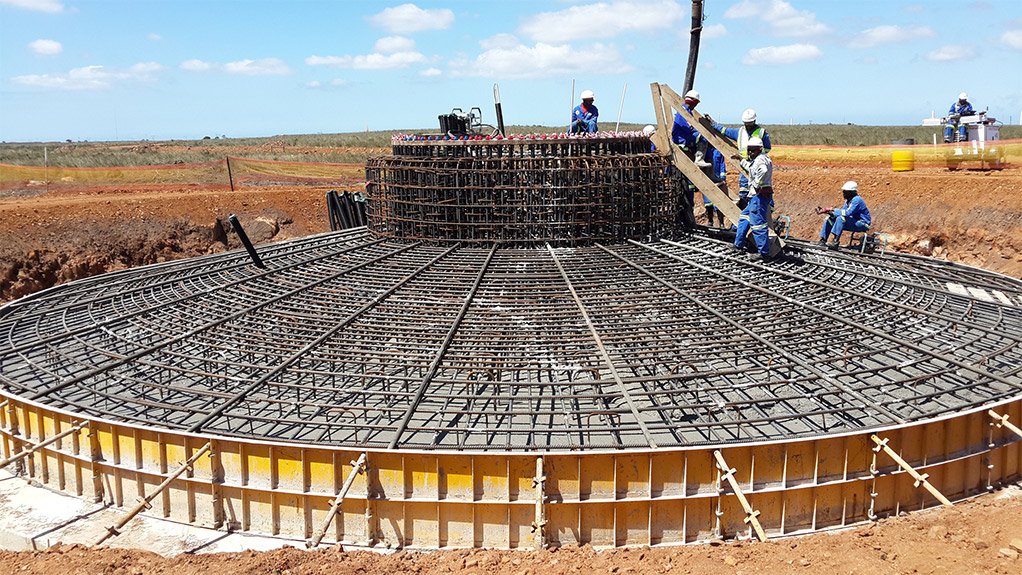When designing a raft foundation on piles, does the soil under the raft contribute to the load bearing capacity? What if the the piles are assumed to take 70 percent of the load and the raft the remaining 30, but in reality the settlement is different between these two parts?
Navigation
Install the app
How to install the app on iOS
Follow along with the video below to see how to install our site as a web app on your home screen.
Note: This feature may not be available in some browsers.
More options
Style variation
-
Congratulations cowski on being selected by the Eng-Tips community for having the most helpful posts in the forums last week. Way to Go!
You are using an out of date browser. It may not display this or other websites correctly.
You should upgrade or use an alternative browser.
You should upgrade or use an alternative browser.
When designing a raft foundation on piles, does the soil under the raft contribute? 6
- Thread starter T2ioTD
- Start date
- Status
- Not open for further replies.
Conservative also means as easy as possible to construct.
Not like this!


How would you design that wind turbine foundation?
--Einstein gave the same test to students every year. When asked why he would do something like that, "Because the answers had changed."
Not like this!


How would you design that wind turbine foundation?
--Einstein gave the same test to students every year. When asked why he would do something like that, "Because the answers had changed."
I think you can caveat every situation to your specific needs and to make your point. But the question was can you consider support from soils and the sort answer is yes. If you decide to use a piled raft then you can consider some support from soil if its appropriate. Its something that does not only work in theory as 1503-44 said, its been proven to work.
But to JAEs point, of course you need appropriate goetech data, that applies to all foundation systems.
Funnily enough Polous is giving a talk today on the very topic!! I will be attending, you can sign up here.
But to JAEs point, of course you need appropriate goetech data, that applies to all foundation systems.
Funnily enough Polous is giving a talk today on the very topic!! I will be attending, you can sign up here.
-
1
- #23
I think I said it works in theory, but perhaps not in practice.
If he gives any examples that were actually constructed, it would be interesting to hear the details. I still don't understand why anyone would do that. I mean, how much money are we talking about, 5 or 10% of bottom bar cost? What's your saving % estimate? Im still still smelling high risk and false economy here.
--Einstein gave the same test to students every year. When asked why he would do something like that, "Because the answers had changed."
If he gives any examples that were actually constructed, it would be interesting to hear the details. I still don't understand why anyone would do that. I mean, how much money are we talking about, 5 or 10% of bottom bar cost? What's your saving % estimate? Im still still smelling high risk and false economy here.
--Einstein gave the same test to students every year. When asked why he would do something like that, "Because the answers had changed."
MTNClimber
Geotechnical
EireChch - How was the presentation? Did you gain any insights or have any newer references to share?
Dik - I agree with not skimping on costs. Still, unfortunately, we have to have these conversations because some engineers and contractors want (or will want) to implement this approach to save some time and money (in theory) and look like a hero. Many have lost the battle against ground improvement via rigid inclusions and aggregate piers, which seem to have problems on some jobs, more than pile foundations in my experience, but then perform fine on others and end up saving the owner big money. These newer technologies seem to work themselves out over time through lawsuits, refining the design of approach in the industry, and sometimes regulation/codes (which there is little of for pile-enhanced rafts, rigid inclusions, and aggregate piers). It just seems like we could be in the infancy stage, even if the technology is decades old.
I'm glad we're having this discussion.
Dik - I agree with not skimping on costs. Still, unfortunately, we have to have these conversations because some engineers and contractors want (or will want) to implement this approach to save some time and money (in theory) and look like a hero. Many have lost the battle against ground improvement via rigid inclusions and aggregate piers, which seem to have problems on some jobs, more than pile foundations in my experience, but then perform fine on others and end up saving the owner big money. These newer technologies seem to work themselves out over time through lawsuits, refining the design of approach in the industry, and sometimes regulation/codes (which there is little of for pile-enhanced rafts, rigid inclusions, and aggregate piers). It just seems like we could be in the infancy stage, even if the technology is decades old.
I'm glad we're having this discussion.
MTNClimber - Could you elaborate on issues you've experienced with aggregate piers or rigid inclusions? Or link to such info? We've recommended them on several projects in recent years and other than equipment breakdowns and occasional mis-location haven't experienced any problems that I'm aware of.
I'd like to know if we should be anticipating problems or considering other factors. Thanks.
I'd like to know if we should be anticipating problems or considering other factors. Thanks.
-
2
- #27
MTNClimber
Geotechnical
Jrit - I've heard many nightmare stories from ground improvement contractors talking crap against their competitors. "Did you hear they installed rigid inclusions in (insert city) and the building settled 8 inches?" type of stories. No real specifics, but they all say it about each other. One of the more public ones is the 295 Retaining Wall Failure in Bellmawr, New Jersey. I don't love RI's and AP's but have accepted them as good cost savings on specific projects. That doesn't mean I don't lose sleep over them.
EDIT: I couldn't find the report, but this website summarizes the report in some detail.
EDIT: I couldn't find the report, but this website summarizes the report in some detail.
-
1
- #29
Retrograde
Structural
1503-44 said:If he gives any examples that were actually constructed, it would be interesting to hear the details.
These 40 and 50 storey towers on the Gold Coast (Australia) were constructed with a piled raft. The geotechnical engineers presented at a conference about it.
I understand the savings on piles amounted to millions of dollars.

geotechguy1
Civil/Environmental
The Gold Coast towers were done by geotechnical engineers who actually knew what they were doing (Golder).
MTN - the talk was good, but I did drift in and out as I was trying to get something out!
But yeah, there was an example of saving of 3.3million dollars for project in Gold Coast so could be the ones mentioned above.
I would think that these loads would be quite high and the soil was relatively competent by itself, in which case I could see potential there for combining piles to increase capacity further. I don't think combination is feasible when the soil is too thick to drink and too thin to plow. Most of my cases were at refineries next to the Mississippi River and cogen turbine structures adjacent to river mouths and harbors with SB of 800 psi.
--Einstein gave the same test to students every year. When asked why he would do something like that, "Because the answers had changed."
--Einstein gave the same test to students every year. When asked why he would do something like that, "Because the answers had changed."
- Status
- Not open for further replies.
Similar threads
- Replies
- 1
- Views
- 2K
- Replies
- 6
- Views
- 10K
- Question
- Replies
- 24
- Views
- 19K
- Locked
- Question
- Replies
- 1
- Views
- 1K

![[ponder] [ponder] [ponder]](/data/assets/smilies/ponder.gif)